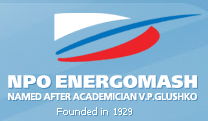Russians Develop A Pulsed Detonation Rocket Engine.
Conventional rocket engines have reached a high level of efficiency. However, the space industry is always working on improving the propulsion systems used in space flight. The pulse detonation rocket engine (PDRE) was conceived by Soviet scientists and has been researched for over seventy years. If it can be perfected, it will significantly exceed the capability of current rocket engines.
In a PDRE, the fuel and oxidizer are injected into the combustion chamber and then compressed with a detonation wave before being ignited. The "pulsed" in the name refers to the fact that the fuel and oxidizer are injected into the combustion chamber in pulses and are not fed in continuously. These type of engines will exceed conventional engines in thermodynamic efficiency. Moving parts such as compressor spools are not required to compress the fuel/oxidizer mixture which reduces the weight and complexity of the engines. Impediments to a working PDRE include the problem of fast and efficient mixing of fuel and oxidizer, the prevention of spontaneous autoignition of the fuel/oxidizer mix and optimal integration with the inlet system and the exhaust nozzle.
Most current rocket engines burn their fuel/oxidizer at a subsonic velocity which results in problematic pressure differentials as the fuel/oxidizer mix burns. The PDRE burns its fuel/oxidizer mix at a supersonic velocity so the burn is smoother at a constant volume. However, in order to insure that all the impulse of the burning fuel/oxidizer in a rocket engine is shot out of the nozzle, it is necessary to block the passage back into the engine from the combustion chamber. The speed of the burn in the PDE makes it very difficult to close the inlet quickly enough to prevent blowback. The intended cycle time of a PDE is thousands of times per second which will help smooth out the vibrations generated by pulsing the fuel/oxide burn. This process will also generate greater noise than conventional engines.
Another problem for PDREs is how to efficiently ignite the fuel/oxidizer mix. In order to get the supersonic burn required, a subsonic burn is started and then accelerated down a special tube with obstructions that are designed to split the advancing burn into multiple streams. This is difficult to model and engineer.
Now the Russian Advanced Research Foundation working in conjunction with Energomash has announced the creation and testing of a full sized PDE. The engine burns kerosene for fuel and oxygen for oxidizer. The Russians intend to develop their PDE for use in missiles and space vehicles. If they can deliver a working PDE, the Russians will have the most advanced rocket engine among space-faring nations. This will give them a significant advantage in the exploring and exploitation of space. If the Russians succeed in the development of the PDRE, other countries competing in the exploitation of space will have to develop their own PDREs or be left behind.
Companies and agencies in the U.S. have been working on pulse detonation rocket engine designs for over twenty years but have yet to produce a working model that could be commercialized. With the Russian announcement, the pressure will be on the U.S. space industry to ramp up their efforts to develop a PDRE.
Logo of Energomash, a Russia space research company:
